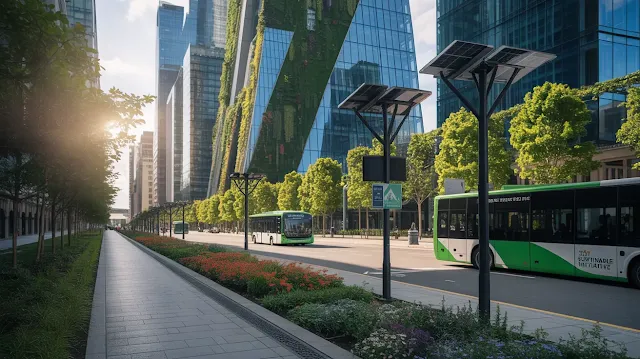The Urban Green Revolution: Rethinking Our Cities for a Sustainable Future
Welcome! You're about to explore a different kind of city story, one where nature and technology meet, and where your role as a citizen truly matters.
We’re diving into something that’s not just about parks or panels, but a deeper transformation: the Green Revolution in cities.
Understanding the Original Green Revolution
Back in the twentieth century, the term "Green Revolution" referred to an agricultural wave of innovation, mechanization, genetic seeds, chemical fertilizers, that fed millions but left scars on nature, health, and land.
Fast forward to now, we’re applying the principles of revolution not to farmlands, but to urban landscapes. That’s the shift. That’s the challenge.
Rethinking What It Means to Green a City
Cities are ecosystems in concrete. But with some smart thinking and intentional change, they can be brought to life. Here's how:
Urban planning with purpose: No more soulless high-rises. Think vertical forests, open plazas, and breathable layouts.Integrating renewable energy: From neighborhood solar hubs to wind harvesting on rooftops.
Establishing green infrastructure: Green rooftops, walkable shaded paths, walls of living plants, mini-forests in dense districts.
This isn’t just about beautifying, it’s about survival, health, and joy.
Reflecting on the Global Impact of the Original Revolution
When the original agricultural green wave hit developing nations, it wasn't all good news. Sure, food production surged, but so did inequality, ecological damage, and a loss of local practices.
Now, in the urban context, we must learn from that. Cities in the Global South face their own limits, water stress, heat islands, traffic chaos.
But every challenge is a design opportunity. Smart, inclusive urbanism can turn any block into a model of sustainability.
Core Principles of an Urban Green Transformation
Every movement needs a foundation. Here's what should guide urban green strategies:
Equity and inclusion: Nature and clean air shouldn’t be privilegesAdaptation to local resources: Use what fits, whether it’s desert-adapted greenery or monsoon-ready drains
Collaborative planning: Top-down decisions rarely work alone. People shape places. Let communities lead the transformation
Embedding Renewable Energy into Urban DNA
Energy powers our daily lives. But if cities keep running on fossil fuels, they’ll keep polluting, and overheating.
Let’s flip the script:
Rooftops become solar harvestersSmart grids distribute energy efficiently
Wind, water, and even waste are transformed into power sources
It's not just technical, it's cultural. A city that produces and manages its own clean energy is a city with control over its destiny.
The Real Value of Green Infrastructure
Green doesn’t mean ornamental. It’s deeply functional:
Improves air quality and filters pollutantsReduces urban temperatures and mitigates heat stress
Enhances public well-being by providing mental and physical benefits
Boosts local economies through tourism, higher property values, and lower healthcare costs.
It’s not a luxury. It’s foundational infrastructure, just like roads or water systems.
Cities That Are Leading the Charge
You don’t have to imagine. Cities like Copenhagen, Singapore, and Cape Town are showing how it’s done.
In the Arab region too, things are changing. Abu Dhabi has ambitious net-zero communities. Casablanca is making waves with smarter mobility and green corridors.
It’s happening. Not fast enough but the momentum is building.
What Can You Actually Do?
Change doesn’t only come from big policies. Your actions ripple out:
Designing something new? Embed sustainability in itWorking with city agencies? Advocate for green-first planning
Just a concerned resident? Start small, plant a tree, join an eco-campaign, switch to renewables when possible
Green cities grow from grassroots movements too.
Closing Thoughts: Why This Matters Now
The Green Revolution in cities is more than a buzzword. It’s about how we want to live tomorrow, healthier, smarter, more human.
This is our moment to rebuild, re-nature, and reimagine our urban lives.
Let’s design cities that care. That breathe. That give back.
Let’s make them green not just in color, but in spirit 💚




Write a comment, your opinion matters to us